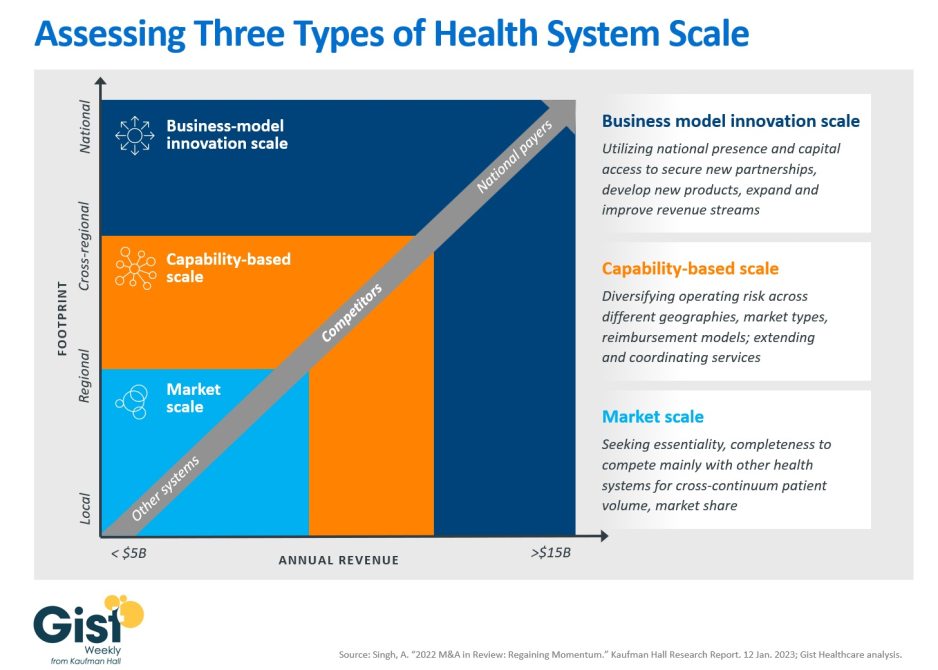Following this week’s news of Kaiser Permanente’s Risant Health subsidiary closing its acquisition of Geisinger, the graphic below provides a framework for thinking about health system scale. Hospitals have pursued in-market mergers to increase their essentiality and better compete with neighboring health systems for patient volume and market share. Today, with many of these mergers subject to heightened antitrust scrutiny, more health systems are exploring potential partners outside of their region. Many of the systems involved in the growing number of “mega mergers” announced over the past few years are looking to secure new or complementary capabilities, including extending and coordinating services, as well as diversify their operating risk across different geographies, market types, and reimbursement models. Beyond capability-based scale, health systems with enough of a national presence and significant capital resources may be able to unlock business model innovation scale. This scale may allow them to expand and improve revenue streams, fully redesign care delivery, and secure national partnerships for things like manufacturing their own supplies. Systems with this kind of scale can shift their competition focus beyond other health systems to for-profit healthcare disruptors, one of the goals Kaiser Permanente stated it has for Risant. However, even health systems that have achieved this level of scale are still much smaller than the disruptors against which they are attempting to compete.









